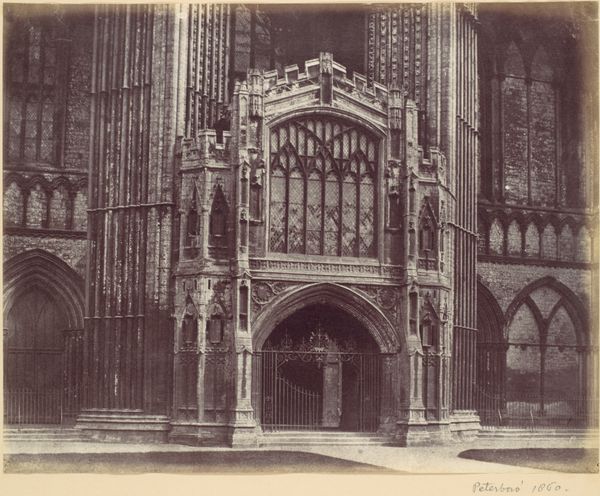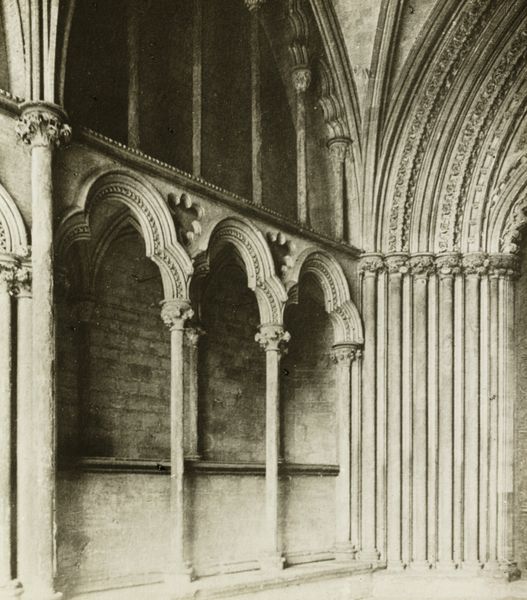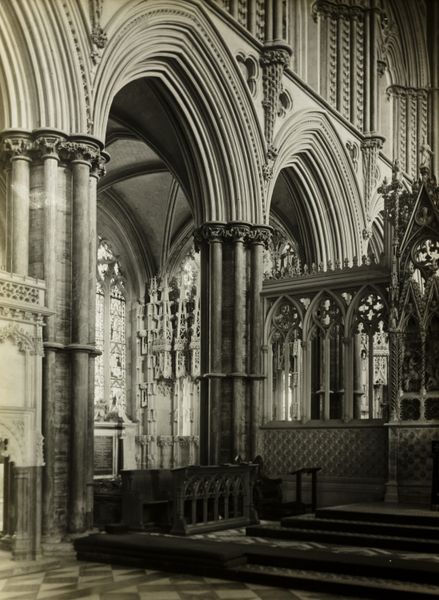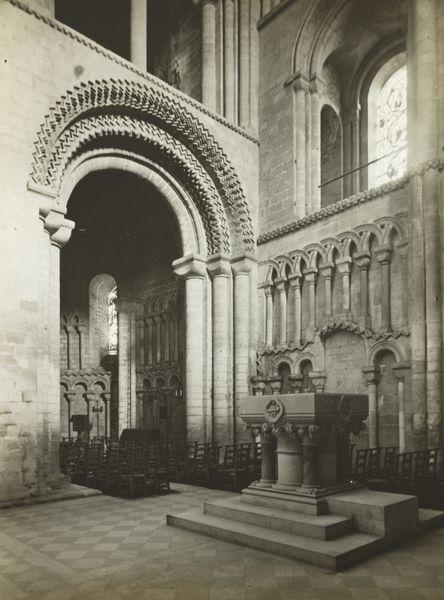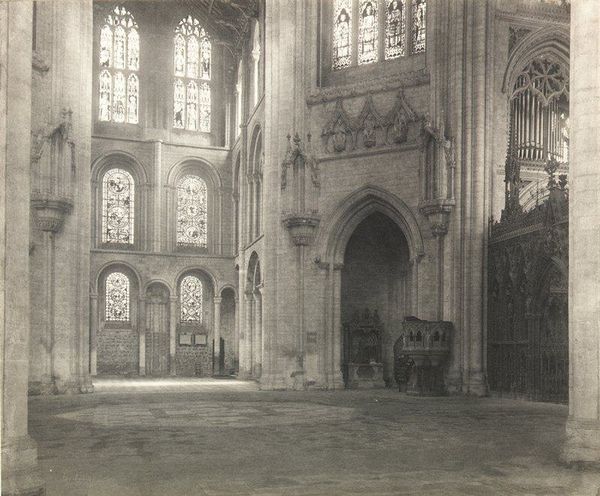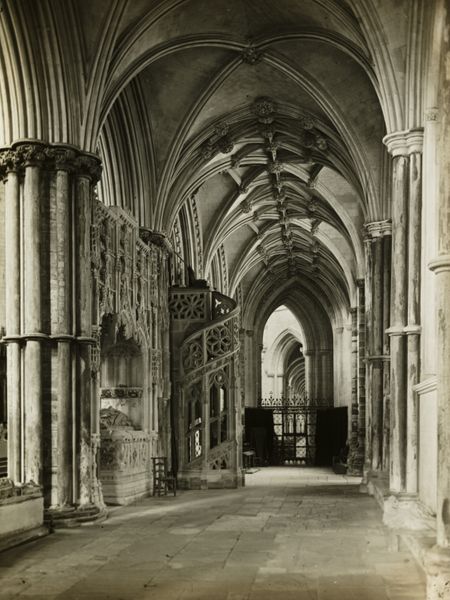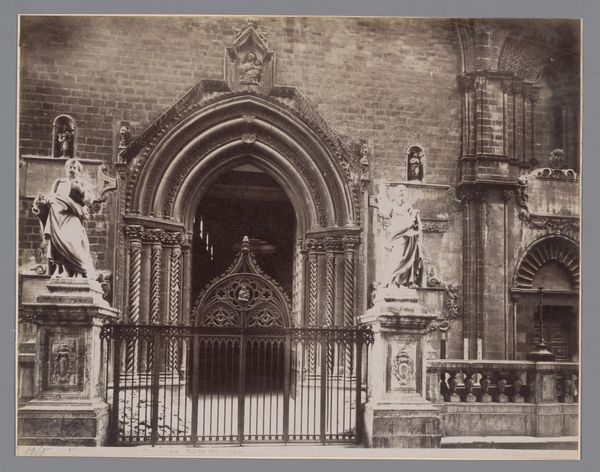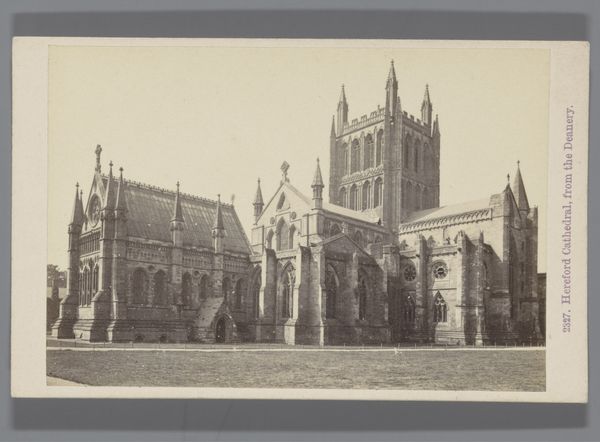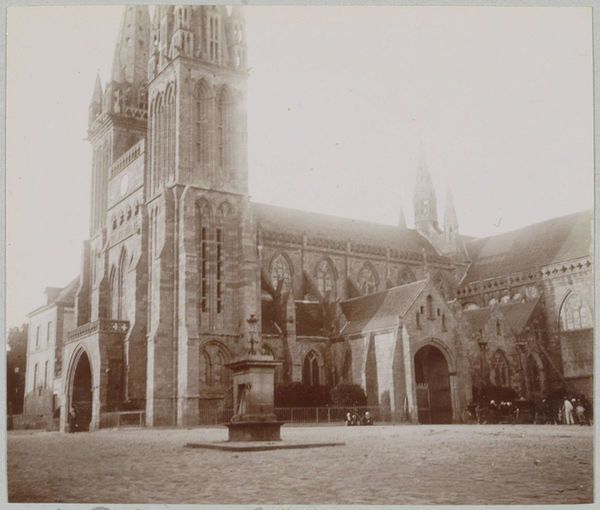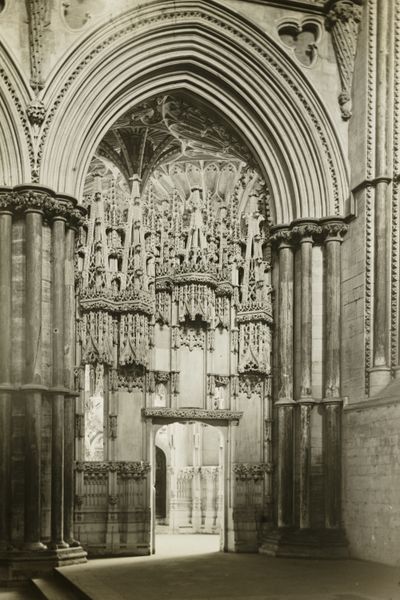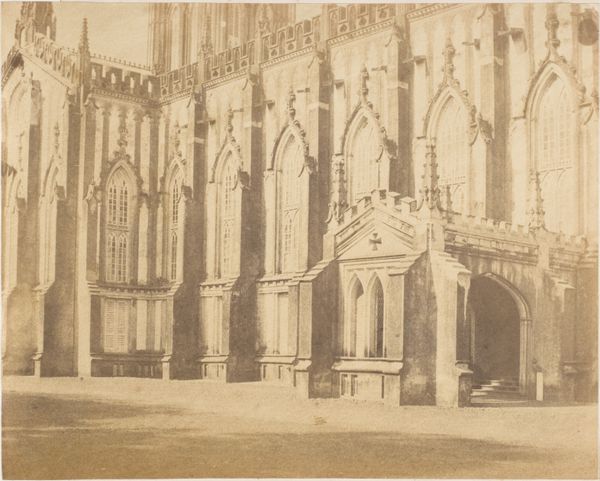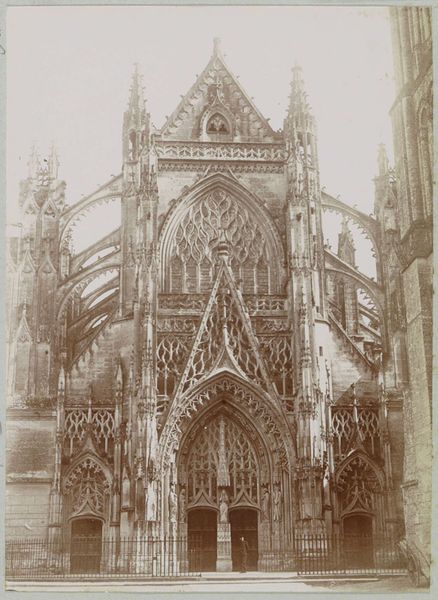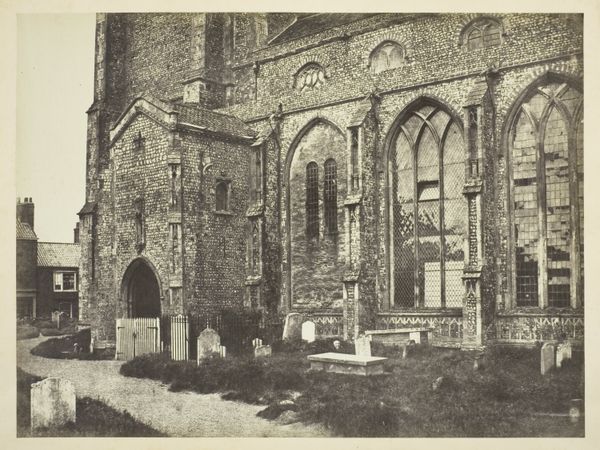
print, photography, site-specific, architecture
#
architectural sketch
#
building study
#
medieval
# print
#
gothic
#
historic architecture
#
photography
#
site analysis
#
england
#
site-specific
#
architectural section drawing
#
architectural drawing
#
architecture drawing
#
architectural proposal
#
architecture
#
historical font
#
historical building
Dimensions: 7 7/8 x 6 1/8 in. (20 x 15.56 cm) (image, sheet)19 3/16 x 12 5/8 in. (48.74 x 32.07 cm) (mount)
Copyright: No Copyright - United States
Editor: So this print is Frederick Evans' "Wells Cathedral," dating from the late 19th or early 20th century, held at the Minneapolis Institute of Art. I find the photo compelling because the stark lines and subtle gradations of light make it feel almost abstract, despite its clear subject. What elements of this print stand out to you? Curator: Immediately, the interplay of light and shadow demands attention, no? Evans masterfully uses tonality to emphasize the geometric purity of the Gothic architecture. Notice how the pointed arches and vertical piers create a sense of upward movement, drawing the eye heavenward. How does the restricted tonal range influence your interpretation? Editor: It makes the structure feel less temporal, maybe more like an idea of a cathedral than a physical place. The lack of color simplifies it down to line and form. Curator: Precisely! Stripped of color, the building’s skeletal structure becomes more legible, offering an unmediated encounter with its formal properties. The repeating patterns—the windows, the buttresses—underscore a formal logic. Does that regular cadence suggest anything to you? Editor: A feeling of order? That everything has its place, maybe. But it almost feels too perfect... a bit sterile. Curator: Perhaps. Or perhaps Evans aims to capture the inherent rationality embedded within the architectural design itself, transforming stone and mortar into a manifestation of pure, intellectual form. Have our ideas about its structure changed for you at all? Editor: Definitely. I see how reducing it to those formal elements emphasizes not just what it is, but why it is, down to its foundations. Curator: Precisely! An astute observation. This cathedral transcends its function and reveals, at the skillful hands of the photographer, a compelling essay on form.
Comments
No comments
Be the first to comment and join the conversation on the ultimate creative platform.

